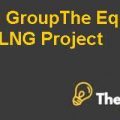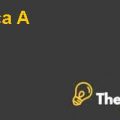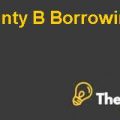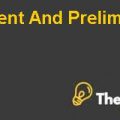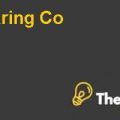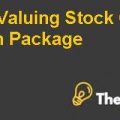Question 1. Did Matthews do a good job of summarizing the pros and cons of using NYMEX contracts versus using the risk management products offered by KCNB?
Answer: In order to hedge the fuel cost for the J&L Rail Road, Matthew recommend that the company should go for hedging for the next 12 months and reason behind for this recommendation was that, despite the fact of using the more advanced technology to save the fuel cost, it is the percentage of revenue that had been increasing from the past several years. For this hedging of the fuel cost, Matthew analyzed the different hedging options such as Commodity Swaps, Cap, Floor and Collar.
To completely hedge the prices of the fuel for the next year, commodity swap could be used to fix the prices, and in that if any decline in prices of fuel occurs below the Swap prices than it would be a complex situation for the J&L Rail Road. With respect to that, J&L would be in loss under both the situation, wherein the first situation if economic slowdown than the fuel demand will decline than would result in the lower use of fuel rather than the 210 million gallons. In the second situation if the economy grows than the 210 million gallons of fuel would be less or to meet the demand and in order to meet the demand, J&L Rail Road would go for bank settlement to pay the price of excess fuel demand. It also incorporates that J&L would pay more without getting the benefit of hedging.
To eliminate the risk of high fuel prices in the future or for the next 12 months, J&L must seek for the Cap as it would eliminate the risk of fuel price fluctuation. By using the Cap, it would also eliminate the under and over hedging of the fuel prices as it gives the company the right of either to exercise it or not which in the result would be profitable as J&L would only exercise it when there would be profit. Matthew also recommends the use of the Collar as it would give the benefit of Cap and Floor where the cost would be zero. On the other hand it would also incorporate the hidden costs as by using the collar, it would not avail the benefit from the prices of being below from the Floor. From the above analysis, it can be concluded that all of the NYMEX and KCNB pros and cons given by the Matthews for J&L are efficiently summarized.
Question 2. Using the Black-Scholes model as adapted for futures contracts, what inputs should you use to price the caps and floors? Explain your choice for each variable with particular attention to your estimate of volatility. How do your prices compare to KCNB’s quotes? What would explain the pricing differences relative to NYMEX options?
Answer:
For the Future contract used for hedging of heating oil, the inputs such as Stock Price and the Strike Price, having Treasury bill as Risk Free Rate, time was given and the Implied volatility. The implied volatility was taken and calculated from the past historical prices of the stock. All of these inputs were used in the calculation of the Cap and Floor. The NYMEX prices were heating oil price those were used in the calculation of the Black Scholes Model but the prices of the Cap and Floor were taken from the KCNB pricing quotations given in the case.
The estimate of volatility is based on the historical prices and it was included in the calculation of the hedging because of the reason that it shows that how much it would be riskier with respect to the stock price as the stock price of the heating oil is changing on a daily basis. The stock price compares itself with the strike price used in the Black Scholes model that will not spent tile the time of maturity. To adjust the timing difference in the stock price, exercise price is discounted to calculate the present value of its using the risk free rate. To adjust the value of the stock price, present value of exercise price is deducted from the stock price exercise price.
The KCNB Prices are different from the NYMEX prices and it is because of the reason that, the NYMEX prices carried the higher rate than the Cap and Floor prices offered by the KCNB.
The difference between the stock option and NYMEX option is that, in stock option, stock prices always be taken as the input in terms of current market prices, but in NYMEX option the current market price always reflects the projection of the future price that would be the spot price of the future when it matures.....................................
This is just a sample partial case solution. Please place the order on the website to order your own originally done case solution.




